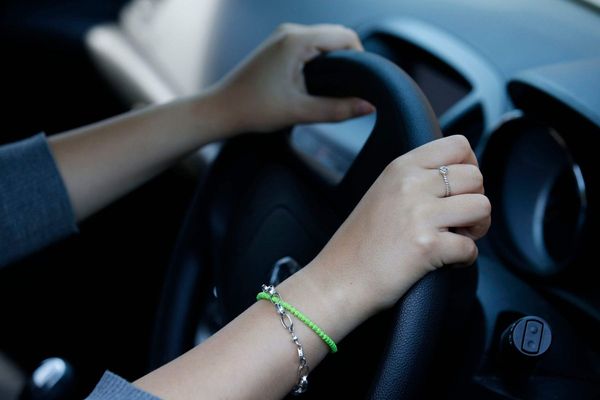
A new rule finalized by the National Highway Transportation Safety Administration (NHTSA) will mandate a revolutionary piece of lifesaving automotive safety technology, but kinks in existing systems sold by automakers will have to be worked out before the ruling comes into full effect.
Related: Tesla makes another harsh last-minute decision, frustrating students

As per the ruling, all new light passenger vehicles and pickup trucks sold in the United States will be required to have a trio of technology-based safety features by September 2029; specifically forward collision warning, automatic emergency braking (AEB), and pedestrian automatic emergency braking.
In its statement, the NHTSA says that the new Federal Safety Standard Ruling is expected to significantly reduce rear end and pedestrian crashes. Once implemented, the agency projects that the ruling will save at least 360 lives per year and prevent at least 24,000 injuries annually.

“The new vehicle safety standards we finalized today will save hundreds of lives and prevent tens of thousands of injuries every year,” said U.S. Secretary of Transportation Pete Buttigieg. “The Bipartisan Infrastructure Law is not only making historic investments in transportation, it’s also ushering in a new era of safer travel by ensuring new cars and light trucks are equipped with automatic emergency braking, making our roads safer for drivers and pedestrians alike.”
The ruling itself will require automakers to not only include the features in the cars, but have them work in the toughest conditions and situations possible out on the road.
It requires the systems to be able to stop cars at speeds up to 62 miles per hour to avoid colliding with a vehicle and must be able to detect pedestrians in a car's path during the daytime and the nighttime.
Additionally, the agency is also requiring automakers to make its systems capable of hitting the brakes at speeds up to 90 miles per hour when detecting an imminent collision with another vehicle, and at speeds up to 45 miles per hour when detecting imminent collisions with pedestrians.
The technology gap:

IIHS
Related: New safety tests expose flaws in key automotive safety tech
Though the authority figures recognize that the move is a step in the right direction, recent work by independent safety experts and evaluators suggest that auto makers have a long way to go before the rule comes into full effect in September 2029.
Recent tests by the Insurance Institute for Highway Safety (IIHS) have shown that not all safety suites on offer by automakers are made equal, with some being less effective at avoiding collisions than others.
In its latest test involving ten popular small SUVs from brands like Chevrolet (GM) , Mazda (MZDAF) , Volkswagen (VLKAF) , Toyota (TM) , Honda (HMC) , Jeep (STLA) , Hyundai (HYMLF) , Ford (F) , Subaru (FUJHF) and Mitsubishi (MMTOF) , the institute assessed the cars' collision warning alerts and automatic emergency braking systems to see if they work at 'normal' traffic speeds of 31, 37 and 43 miles per hour.
More Automotive:
- Maserati exec defends the use of a car feature drivers hate
- Feds are skeptical about the safety of popular driver-assist tech
- Young guys who like loud cars are likely to be psychopaths, study suggests
Only one car - the Subaru Forester, received its highest mark on the tests.
The Honda CR-V and Toyota RAV4 received the IIHS's second highest rating of "acceptable," while the Hyundai Tucson, Ford Escape and Jeep Compass were given "marginal" grades. Four vehicles; the Chevrolet Equinox, Mazda CX-5, Mitsubishi Outlander and Volkswagen Taos were given its lowest grade of "poor."
In a statement to TheStreet, a representative from the IIHS said that it is happy to see the new rule from the NHTSA moving forward, but more work needs to be done.
"Automatic emergency braking is already preventing a lot of crashes, and requiring that it work at higher speeds and with pedestrians, especially in the dark, will ensure that more crashes are prevented and more lives are saved. That said, the compliance timeline for the rule is longer than we’d like to see and underscores the importance of the consumer ratings tests that IIHS runs in encouraging better technology today," IIHS Media Relations director Joe Young told TheStreet.
"As our new test program demonstrates, automakers have some work to do when it comes to improving AEB systems to work at higher speeds. We’re confident, however, that automakers will respond to IIHS testing and that we’ll see significant improvements in AEB well ahead of the 2029 compliance date, including in scenarios not covered by the new rule, like situations involving stopped motorcycles."
Related: Veteran fund manager picks favorite stocks for 2024







